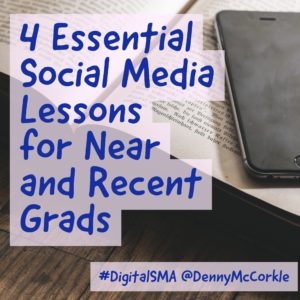CXWith the average person spending about two hours a day on social media, it’s not surprising that 31% of consumers now claim that they use it to search for items to purchase. The percentage of people shopping directly within social media may seem small – 10% of consumers use the “buy now” buttons on social media – but there are millions of people who are using social media for purchase inspiration, to research brands, and to reach e-commerce websites and begin the buyer journey.
With such a large number of people shopping on social media, how can retailers properly track, visualize, and analyze the buyer journey, and how can they ensure that their customers have a seamless cross-platform user experience?
What are some of the frustrations related to a subpar cross-platform experience?
The cross-platform buyer journey is not a new concept, and 85 percent of online shoppers complete their purchases on a different device than the one they used to initiate the purchase. But with social media in the mix, customers are now met with new CX hiccups, including:
1. Lack of shopping cart integration between platforms:
Usually, when users click on an ad in social media, they are taken directly to the product page in the web or mobile site in order to populate the shopping cart there. But if those users already have items in the shopping cart in the mobile app, then they will have to look for the products and add them to the shopping cart again in order to complete the checkout process once, which can be inconvenient and frustrating.
2. Lack of product identification:
Social media ads do not show product IDs in their posts, and it can be difficult to track down an item based on photo alone. Without specific identifying information, a customer will struggle to successfully locate the item on the app, mobile site or website to purchase — or give up looking altogether because it’s too difficult to find.
3. Lack of continuity between social media and the ecommerce site:
Product pages may look nothing like the image that was posted on social media. In addition to making items harder to identify, shoppers could question if the product in the listing is the same product that appeared on the social media ad and may lead them to believe that the company is trying to dupe them into buying a lesser-quality product.
The main challenge facing e-commerce operators
Adding social media to the cross-platform buyer journey, it is a bit more challenging for e-tailers to pinpoint which part of the customer experience needs to be optimized.
Companies need to visualize the cross-platform journey their customers take in order to better understand what needs to be done for conversion funnel optimization. Did a customer abandon the conversion funnel, or did they simply move to their smartphone from their desktop? If the customer did abandon the conversion funnel, why and where exactly did it happen?
What steps can a company take today to improve the cross-platform customer experience?
By using advanced analytics tools, such as heatmaps and session replays, ecommerce websites can gain insights on what are the customer’s’ frustration points and where exactly they abandon the shopping process. This helps in minimizing any confusion caused during the jump from the social media page to shopping cart.
E-commerce sites can avoid cross-platform CX failure in 4 main ways:
1. Encourage customers use social logins.
When users create accounts and login using their social media details, all their account information — including their shopping carts — is easily accessible on any platform the consumer chooses to use.
2. Understand the different shopper personalities to encourage checkout.
A great customer experience for one customer could be an unpleasant one for another. It is imperative to segment your users according to their shopping personalities so you can tailor the experience and the content they see according to their motivations and needs.
According to Dr. Liraz Margalit, Web Psychologist at Clicktale, there are six online buyer personas to consider:
- The wish lister: This consumer daydreams about out-of-reach purchases, filling the cart with the perfect items, but then usually abandons them at checkout.
- The brand-oriented visitor: He or she loves the prestige and style that comes with a favorite brand, and doesn’t care as much about need or functionality.
- The rational visitor: This shopper conducts thorough research online, including product specs and price comparisons, before completing a purchase.
- The maximizer: He or she knows the ins and outs about each item before making the decision to purchase.
- The satisfier: This user simply wants to quickly purchase an item that meets the minimum requirements and be done.
- The hesitater: This consumer needs additional motivation to complete a purchase.
Customizing the content your users see based on their personality segment improves the customer experience and can have a direct impact on your conversion rates. For example, targeting an ad with a promotional code to “the hesitator” might be the exact nudge needed to push the customer to complete the purchase.
3. Maintain continuity across social media and all platforms.
What consumers see on your social media post and product page must be the same and easily identifiable:
- Do the photos and descriptions match?
- Are taglines the identical?
- Are other identifying marketing elements uniform?
These cues help carry the customer over from social media to the web or mobile site, or mobile app by eliminating any confusion and doubt, avoiding customer frustration and possible abandonment of the purchase.
4. Incorporate advanced analytics
Data-driven insights influence which parts of the customer experience need to be bolstered or altered to secure a sale:
- How are users coming from social media getting confused?
- Why are they frustrated?
- Do they need to spend significant time searching and refilling their cart again once they move from the social media platform to the ecommerce site?
Using advanced analytics tools enables ecommerce operators to visualize where the visitor who came from social media leaked out of the conversion funnel and why, so they can take the necessary actions to improve the customer experience.
Digital & Social Articles on Business 2 Community(19)








